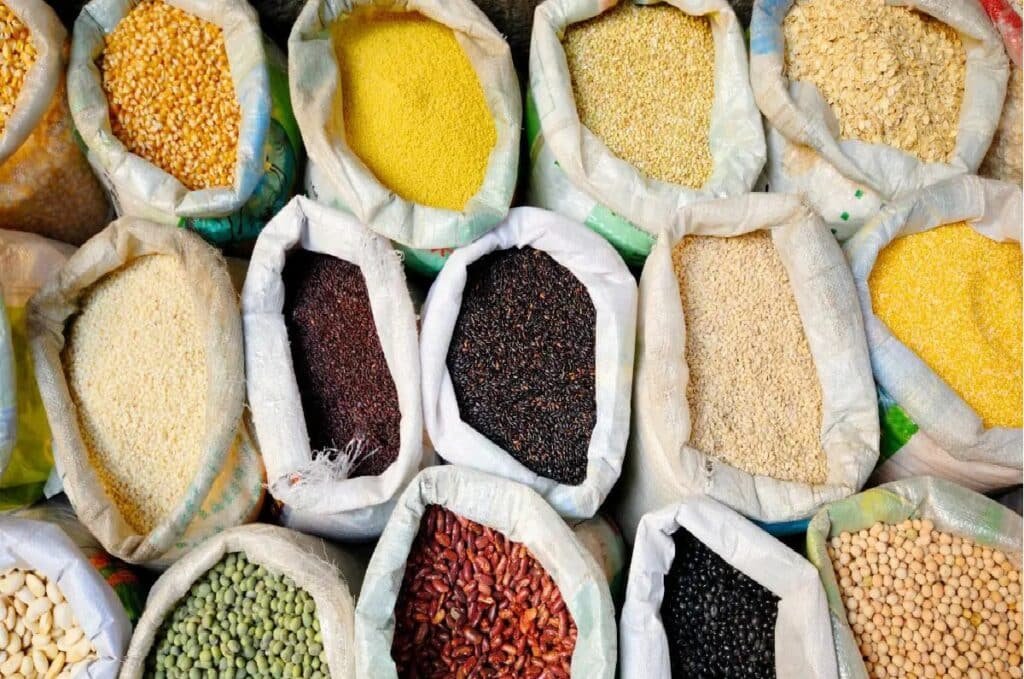Latest News
India Achieves Record Foodgrain Production in 2024-25: Ministry of Agriculture Releases Second Advance Estimates

India’s Agricultural Growth Surges with Record Crop Production
Overview of the Blog
{ The Ministry of Agriculture and Farmers’ Welfare has released the Second Advance Estimates for the production of major agricultural crops (Kharif & Rabi) for 2024-25, highlighting a remarkable increase in foodgrain production. Union Agriculture Minister Shri Shivraj Singh Chouhan approved the estimates, emphasizing that under Prime Minister Narendra Modi’s leadership, the government continues to drive agricultural growth through various schemes and farmer-friendly initiatives. }

Key Highlights of the 2024-25 Second Advance Estimates
- Record-breaking production of rice, wheat, maize, groundnut, and soybean.
- Kharif foodgrain production: 1663.91 LMT | Rabi foodgrain production: 1645.27 LMT.
- Wheat production: 1154.30 LMT (Highest-ever recorded).
- Kharif rice production: 1206.79 LMT, up by 74.20 LMT from 2023-24.
- Oilseed production: Soybean – 151.32 LMT, Groundnut – 104.26 LMT.
- Sugarcane output: 4350.79 LMT.
- Cotton and jute production remain stable.
These figures indicate a robust agricultural performance, reflecting the government’s consistent focus on enhancing productivity, technological advancements, and financial support for farmers.
Government’s Role in Boosting Agricultural Production
Union Minister Shivraj Singh Chouhan reaffirmed that the government is committed to empowering farmers by implementing progressive policies, financial aid, and infrastructural advancements. Key initiatives that contributed to this growth include:
1. Precision Agriculture and Technology Integration
The use of remote sensing, satellite imagery, and artificial intelligence (AI) has helped in accurate crop forecasting and yield optimization. The estimates were validated using data from Crop Weather Watch Group, Remote Sensing Technology, and Crop Cutting Experiments (CCEs).
2. Increase in MSP and Direct Farmer Support
The Minimum Support Price (MSP) for key crops has been consistently increased to ensure better income security for farmers. Additionally, schemes like PM Kisan Samman Nidhi have provided direct financial assistance to millions of farmers across India.
3. Promotion of Nutri-Cereals and Sustainable Farming
The government has been actively promoting millets (Shree Anna), organic farming, and climate-resilient crops to ensure long-term food security while supporting sustainable agriculture.
4. Irrigation and Infrastructure Development
Under Pradhan Mantri Krishi Sinchayee Yojana (PMKSY), extensive efforts have been made to expand irrigation facilities and reduce dependency on monsoons, ensuring stable and higher yields.
5. Financial Aid and Insurance
The Pradhan Mantri Fasal Bima Yojana (PMFBY) has provided crop insurance coverage to mitigate financial losses due to unpredictable weather conditions, benefiting millions of farmers nationwide.

Breakdown of Major Crop Production in 2024-25
1. Foodgrains (Kharif & Rabi) Production
- Kharif foodgrains: 1663.91 LMT.
- Rabi foodgrains: 1645.27 LMT.
- Total foodgrain production: Surpasses last year’s estimates, reflecting a thriving agricultural sector.
2. Rice and Wheat Production
- Kharif rice: 1206.79 LMT (a significant increase from 1132.59 LMT in 2023-24).
- Rabi rice: 157.58 LMT.
- Wheat: 1154.30 LMT, up 21.38 LMT from last year.
3. Pulses and Nutri-Cereals (Millets)
- Kharif Shree Anna (Millets): 137.52 LMT.
- Rabi Shree Anna: 30.81 LMT.
- Tur (Pigeon Pea): 35.11 LMT.
- Gram (Chickpea): 115.35 LMT.
- Lentil: 18.17 LMT.
4. Oilseeds and Cash Crops
- Kharif Oilseeds: 276.38 LMT.
- Rabi Oilseeds: 140.31 LMT.
- Groundnut (Kharif): 104.26 LMT (Highest-ever recorded).
- Soybean: 151.32 LMT.
- Rapeseed & Mustard: 128.73 LMT.
- Cotton: 294.25 Lakh Bales.
- Sugarcane: 4350.79 LMT.
Future Outlook: Growth, Challenges, and Opportunities
1. Strengthening Agri-Infrastructure
The government aims to expand warehousing and cold storage facilities to minimize post-harvest losses and ensure better price realization for farmers.
2. Climate Change and Adaptation
While production is at a record high, climate change remains a key challenge. Investments in climate-resilient farming, water conservation, and precision irrigation will be crucial in sustaining agricultural growth.
3. Export Potential and Global Demand
With increasing global demand for Indian agricultural products, the government is focusing on enhancing agri-exports, improving quality standards, and diversifying crop production.
4. Sustainable and Organic Farming Initiatives
Encouraging organic farming, reducing chemical fertilizer dependency, and promoting bio-fertilizers will ensure long-term soil health and food security.
Conclusion: A Landmark Year for Indian Agriculture
The Second Advance Estimates for 2024-25 highlight India’s strong agricultural sector, achieving record-breaking production across key crops. With government initiatives, technological advancements, and farmer support schemes, India is poised to strengthen its food security, boost exports, and empower millions of farmers.
The continued focus on sustainability, irrigation, and agri-infrastructure will ensure that the agriculture sector remains resilient, productive, and profitable for years to come.
Stay tuned for the Third Advance Estimates, which will include summer crop production!












